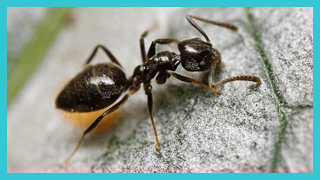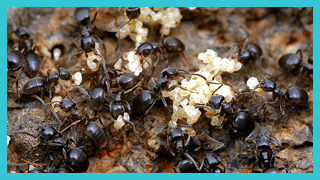Call for a Quick Estimate Today:
(702) 438-9708

 Common Name:
Common Name:
Odorous House Ant
Scientific Name:
Tapinoma sessile
Order and Family:
Formicidae, Ants
Pest Control Reccomendation:
Ant Exterminator
Description:
1/16-1/8″ (2.4-3.25mm)long, the body is brown to black. The antennae have 12 segments.
Food:
Live and dead insects but are also very attracted to sweet foods. They especially like the honeydew that is produced by aphids and mealybugs. Many colonies of odorous house ants tend or herd aphids and mealybugs to collect the honeydew they excrete.
Life Cycle:
A few days after mating, males usually die and the mated females begin new colonies. When a new colony is initiated, a queen lays a small batch of eggs and tends the larvae that hatch. The adults that develop become workers and take over colony labor activities. Once a colony has been established, queens will continue egg laying until late fall.
Habitat:
Outside nests may be found in mulch, soil, debris, logs, stumps, and under stones. Indoors, nests are usually found in wall voids, around hot-water pipes and heaters, behind paneling, under carpets, or beneath the floor.
Range:
The odorous house ant is found throughout North America.
Discussion:
Odorous house ants are tiny, about 3 mm in length, and are dark brown to black in color. They can be taxonomically identified by having a single node on the petiole that is hidden from above by the abdomen. However, odorous house ants are most easily identified by the coconut odor that is produced when their bodies are crushed. It is from this odor that they get their name, odorous house ants. Like all ants, odorous house ants live in social colonies. These colonies are made up of different cast members (workers and reproductives). Male and female reproductives are often called winged swarmers. Swarmers first appear in the early summer months.


Professional, Commercial & Residential Pest Control
Pet & kid friendly, Safe, Organic, Natural Pest Control